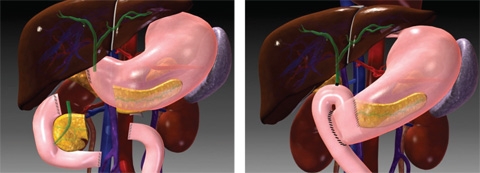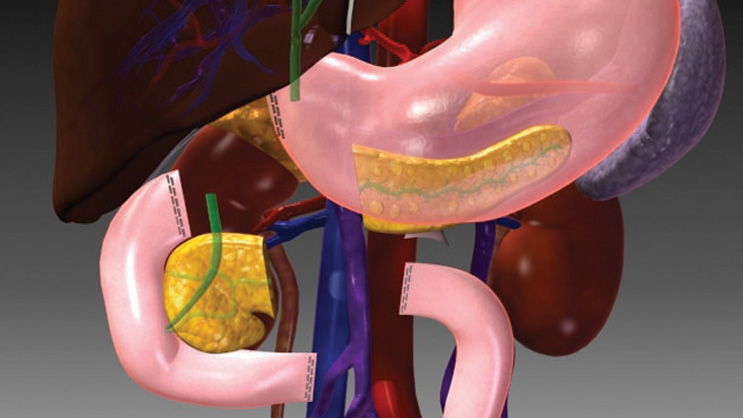Meeting the Challenge, Raising the Bar
Located at the crossroads of the digestive system, the pancreas is a complex organ with multiple functions. It is intimately attached to the first portion of the intestine and overlies the major blood vessels that bring blood to and from all the abdominal organs. Because of this critical location and its vital role in the digestive and endocrine systems, surgery for pancreatic disease a highly complex undertaking.
Dr. Allen Whipple is credited with refining the pancreaticoduodenectomy – the operation that commonly bears his name – while practicing at Columbia–Presbyterian Medical Center between 1910 and 1946. Thus the Pancreas Center stands upon a long history of surgical innovation in the care of pancreatic disease.

Now under the leadership of Dr. John Chabot, the Pancreas Center is a multidisciplinary program with experts from all specialties necessary to optimally care for patients with pancreatic disease. Studies clearly show that patients undergoing surgery at high-volume hospitals do better than those treated at centers performing fewer pancreatic operations.
For patients with pancreatic tumors, surgical removal offers the only possibility of cure. Getting more people safely to the operating room and recovered from surgery without significant complications offers the best chance of improving survival and quality of life.
Our surgeons currently perform the Whipple procedure and other pancreatic operations with among the lowest complication rates in the nation. We routinely use chemotherapy and radiation to convert patients who were originally ineligible for surgery into operative candidates. If a tumor involves the blood vessels, we are able to reconstruct the vessels in order to remove locally advanced cancers. Minimally invasive surgical techniques including laparoscopy and robotics are used to provide excellent cancer outcomes while improving patient comfort and recovery. Other innovations, such as irreversible electroporation, commonly known as NanoKnife, treat tumors when standard operations may not be feasible.

